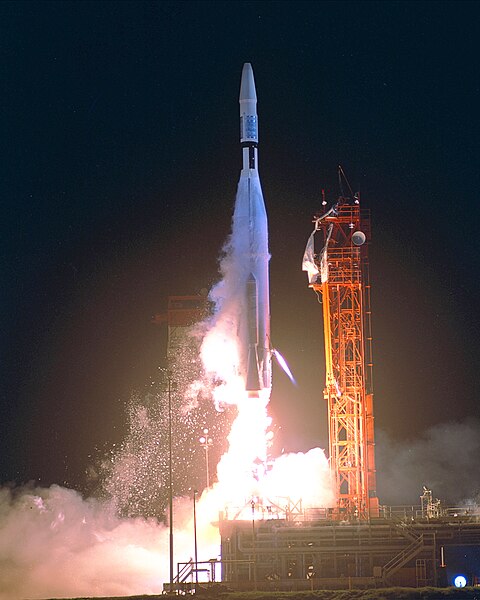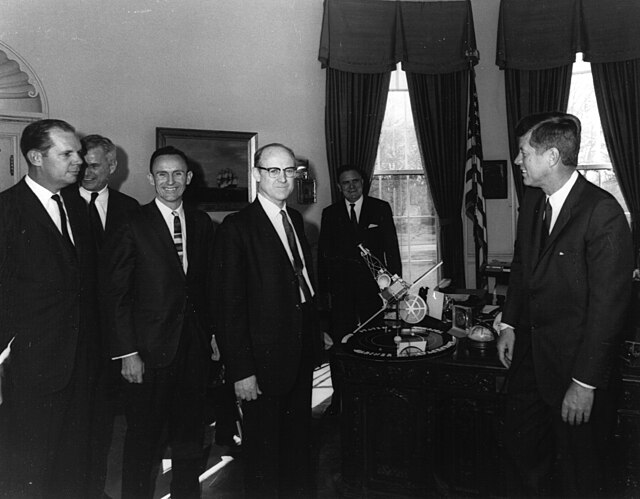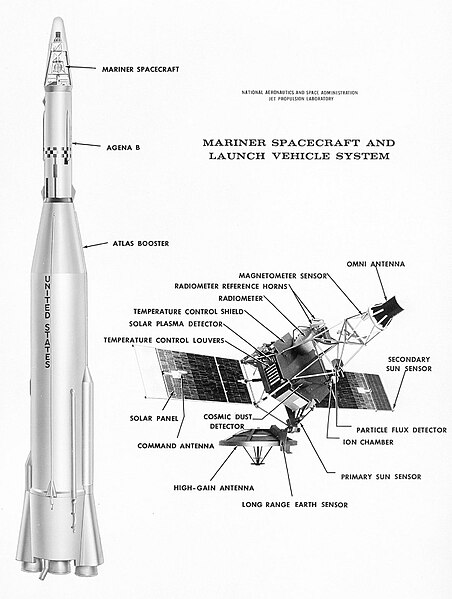The Mariner program was conducted by the American space agency NASA to explore other planets. Between 1962 and late 1973, NASA's Jet Propulsion Laboratory (JPL) designed and built 10 robotic interplanetary probes named Mariner to explore the inner Solar System - visiting the planets Venus, Mars and Mercury for the first time, and returning to Venus and Mars for additional close observations.
Launch of Mariner 1 in 1962
Dr. William H. Pickering, (center) JPL Director, presents a Mariner 2 spacecraft model to President John F. Kennedy in 1963. NASA Administrator James Webb is standing directly behind the Mariner model.
Mariner 2
Diagram of Mariner 1 and 2 with Atlas-Agena launch vehicle
The National Aeronautics and Space Administration is an independent agency of the U.S. federal government responsible for the civil space program, aeronautics research, and space research. Established in 1958, it succeeded the National Advisory Committee for Aeronautics (NACA) to give the U.S. space development effort a distinct civilian orientation, emphasizing peaceful applications in space science. It has since led most of America's space exploration programs, including Project Mercury, Project Gemini, the 1968–1972 Apollo Moon landing missions, the Skylab space station, and the Space Shuttle. Currently, NASA supports the International Space Station along with the Commercial Crew Program, and oversees the development of the Orion spacecraft and the Space Launch System for the lunar Artemis program.
NASA Headquarters in Washington, D.C.
A U.S. Air Force Bell X-1 test flight
Launch of the Army Ballistic Missile Agency's Explorer 1, America's first satellite
Launch of Friendship 7, NASA's first orbital flight, February 20, 1962








